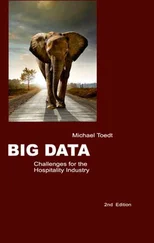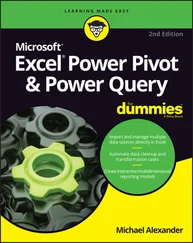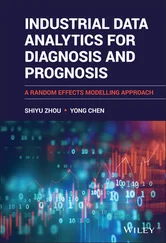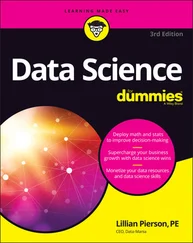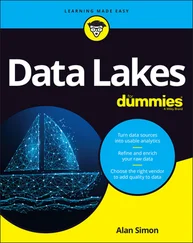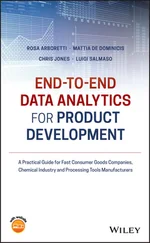1 ...6 7 8 10 11 12 ...20
Defining the desired outcome
In the preceding section, you learned about using analytics models to make predictions of future outcomes. There can be tremendous value in prediction, but you can use analytics also to set the outcome and tell you how to get there. Think about it. It's one thing to predict next week’s sales, but wouldn’t it be cool to set your next week’s sales goals and let your analytics models tell you how to get there? With good analytics models, it's possible.
Predictive analytics basically gives you an equation: y = mx + b (yes, that’s a simple one and the same as the point-slope form of a line). Your model provides values for m and b. Your data provides a value for x and you solve for y. Simple algebra.
Prescriptive analytics is a little different. Prescriptive analytics ask the question: “If I choose a value of y, what value of x will get me there?” In other words, you choose a value of y (maybe your goal for next week’s sales), and then solve for x. After you know x (perhaps x represents the number of prospect calls you need to make), you know what it will take to reach y (your sales goal). At its core, it's still simple algebra.
Even though the algebra is simple, putting prescriptive analytics into practice can be tricky. In algebra, equality is reflexive, which means you can read left-to-right or right-to-left. Technically, models should work the same way, but they don’t always work that simply. Prescriptive analytics can provide some guidance on reaching goals, but you always have to take that guidance with a grain of salt. Try your model’s recommendations, and then evaluate the results. Fine-tune your changes, and then try it again. The best use of prescriptive analytics is as a good suggestion, not a surefire approach to reaching goals.
Building models for simulation
One of the challenges in prescriptive analytics is the iterative and flexible nature of using models this way. Predictive analytics is pretty straightforward. You can determine future outcomes within a known range of error. When turning that model around and using it for prescriptive purposes, you can never be sure that your model is taking into account all the influences that affect outcome. The outcomes your predictive model measures may include unsampled features (characteristics) that happen even though you don’t measure them. If this is the case, just changing one feature may not have the effect you expect.
Because prescriptive analytics is more than just turning a predictive model backwards, you’ll have to run your model multiple times over your dataset, changing a single feature at a time. Building a model that is flexible enough to respond to multiple feature changes is the basis of simulation. You're simulating the nature of reality, which encompasses multiple features that change and some level of unmeasured uncertainty.
Investing the effort to build a good simulation can more than pay for itself. A solid simulation is flexible enough to change as new input shows different trends and still provide output that you can trust. A simulation that tells you how to reach your goals is even better than knowing the future.
Aligning operations and assessing results
The best response to having good analytics models is to change operations based on your model output. Whether your focus is understanding your business, predicting tomorrow’s environment, or using your models to direct decisions, analytics will add value only if you make changes based on what you learn.
Using analytics models, especially those built on data from a blockchain, is the purpose of this book. As you work through each chapter, you should gain an appreciation of the rich data available to you, and how you can use that data to enhance your organization. Enjoy the journey.
Chapter 2
Digging into Blockchain Technology
IN THIS CHAPTER
 Surveying the blockchain ecosystem
Surveying the blockchain ecosystem
 Examining types of blockchains
Examining types of blockchains
 Solving business problems with blockchain features
Solving business problems with blockchain features
 Aligning blockchain with business use cases
Aligning blockchain with business use cases
Blockchain is one of the most discussed technologies of our time. It's commonly described in many ways, including “a disruptive and game-changing technology,” a “distributed ledger of transactions,” and a “new kind of database.” Although these short descriptions are different, there's some truth in each one, but none captures what blockchain is all about. In short, blockchain technology is a radical new approach to delivering trust and confidence over exchanges of value without relying on a trusted third party.
Wow, that’s a mouthful! You’ve probably heard that blockchain supports transactions between participants in a trustless environment. Most of the time, when you transfer something of value from one party to another, you use a trusted third party (someone you trust to handle the money or whatever you're transferring). For example, when you pay a vendor, you use a bank (writing a check) or a payment card processor (using plastic). Both the seller and buyer trust the bank or card processor, so you can trust that the transaction will be completed as you expect. Of course, you can also pay with cash, but even cash transactions depend on a government to guarantee the value of the cash you use. Blockchain technology makes it possible for you to buy something from someone you don’t know (or trust) and still trust that the transaction will complete as you expect without having to rely on a third party.
Blockchain does a lot more than just handle payments — it can manage the transfer of any asset from one owner to another. That asset can be cryptocurrency, real estate, cars, premium olive oil, or anything of value in the real or virtual world. And the great thing is that all information on how those ownership transfers take place stays on the blockchain for later review.
In this chapter, you learn what blockchain technology is all about, some of the different options available, and how to best use blockchain to solve business problems.
Exploring the Blockchain Landscape
From what you read in books and articles, blockchain technology disrupts everything and fixes every business problem — and both at the same time! This view of blockchain’s omnipotence gives a little too much power to what blockchain can actually do. Blockchain can disrupt the way many business transactions are carried out, but it won’t change everything. Likewise, this new technology can solve some business problems that have been around for a long time, but it doesn’t fit everywhere. The trick is to understand what blockchain can do, and what it can do very well.
Managing ownership transfer
When something of value passes from one owner to another, it's referred to as an ownership transfer. One of the things blockchain can do well is manage ownership transfer for items of value without relying on middlemen, or intermediaries, to manage the transfer. You can transfer ownership by giving or selling something to someone. When you sell something, you exchange the thing you sold for some type of payment. Being able to transfer ownership without a middleman can disrupt lots of business models. For example, when you ride with a rideshare service and pay for it with a credit or debit card, the rideshare company normally pays a per transaction fee, but you can be sure it passes that cost along to you! Bypassing the payment card processor means your rides could be cheaper.
Читать дальше

 Surveying the blockchain ecosystem
Surveying the blockchain ecosystem